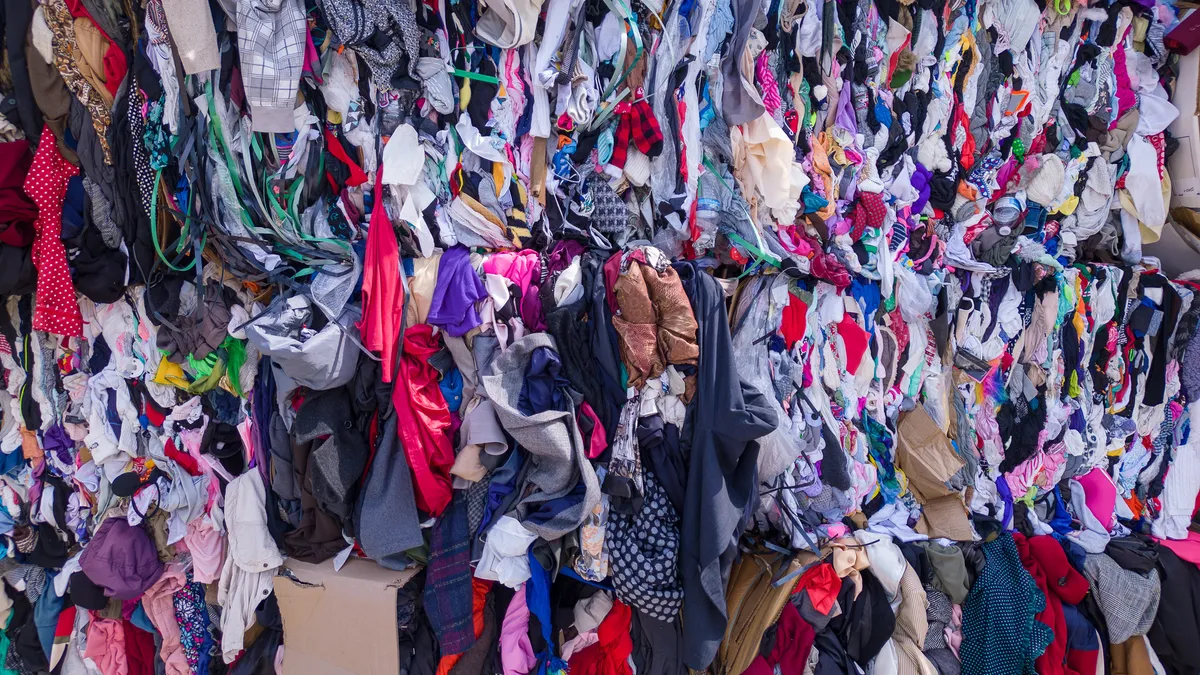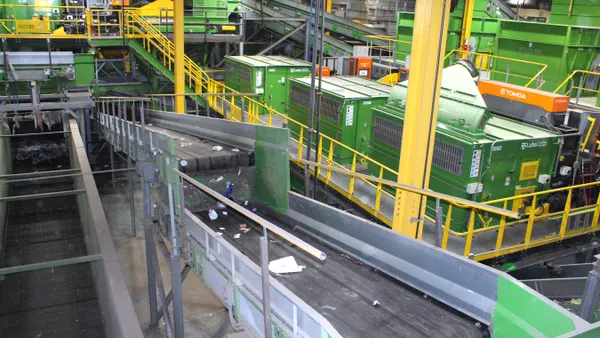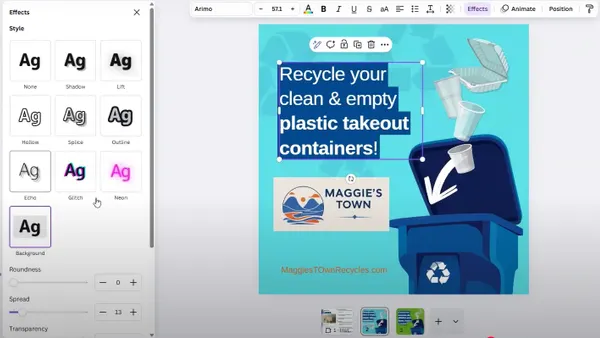Dive Brief:
- Debrand, a Canadian company offering sorting and logistics for end-of-life apparel and footwear, has opened its first U.S. textile sorting facility in Columbus, Ohio.
- Debrand’s new 32,000-square-foot facility is meant to help bolster textile recycling infrastructure in North America, especially as brands and local governments call for more options for diverting clothing from disposal. The facility will include both automated and AI-enabled sorting equipment alongside hand-sorting techniques.
- The company sees Columbus as an ideal location to help grow its footprint in a region where numerous well-known clothing brands operate, which will reduce the distance textiles are shipped for processing and align with sorting operations it subcontracts from WM in Arizona and South Carolina. The company already has a similar facility in the area of Vancouver, Canada.
Dive Insight:
Debrand anticipates the North American market for textile recycling and reuse to expand in the coming years. Factors such as interest from chemical recyclers and the possible implementation of state textile EPR policies could play a role. Yet the region has relatively few facilities to process textile waste.
“The sheer volume of garments produced each year is becoming insurmountable, and there simply aren’t enough regional solutions to address this issue at the scale required in North America,” said Amelia Eleiter, CEO and co-founder at Debrand, in a statement.
The U.S. is one of the top consumers of textiles in the world, driven partly by fast-fashion demand for mass produced, low-cost clothing, according to the U.S. Government Accountability Office. The GAO, which recently published a report highlighting opportunities and challenges for improving textile recycling programs in the U.S., pointed out that current mechanical and chemical recycling technologies “are limited by a lack of supporting infrastructure,” and that more innovations are needed to make the process more effective and accessible.
Debrand says it has diverted over 4.5 million pounds of textile waste from disposal in the last 18 months. The company works directly with clothing brands to manage textiles they can’t sell, such as damaged, returned or defective items. It also helps companies find buyers for the clothing on resale markets.
At Debrand’s facilities, workers sort through the textiles, then communicate with the brand to determine whether the clothing should be resold, donated, recycled or disposed.
Debrand already had longstanding relationships with companies like Abercrombie & Fitch, Lululemon and Victoria’s Secret, which have distribution centers in Ohio. “Having our location nearby those customers made sense from an [environmental] impact and emissions reduction standpoint,” Eleiter said in an interview.
“As our partner, Debrand has been instrumental in advancing our end-of-life garment program,” said Meghan McLane, director of product sustainability at Victoria’s Secret, in a statement. “This facility is another step in building the infrastructure needed in North America to enable brands to move towards more circular models."
Debrand also subcontracts WM for textile sorting services out of its locations in South Carolina and Arizona, meaning some of the material sent to those locations can now be processed in Ohio. Debrand received a strategic investment from WM in November 2022, the first time the company made an investment in the textile recycling space.
The Ohio facility is still in the process of starting up, but it recently received its first load of textiles, Eleiter said. The facility will use a combination of human sorters and automated technology and equipment, including more conveyors and an artificial intelligence-powered “allocation engine.” That AI system collects data on what types of items and brands flow through the facility, what the clothing is made of, and other details to help Debrand decide how to recycle, reuse or resell an item.
The high-tech equipment is a relatively new addition to Debrand’s process, Eleiter said. For the company’s first 15 years in operation, “there was really no need to invest in equipment to sort materials because there weren't really a lot of places for it to go,” she said. Typically, the textiles were resold, donated, downcycled into shoddy fiber for applications such as home insulation or furniture stuffing. In some cases, the material was sent off for incineration.
However, a wider range of market options exist today, necessitating equipment that can help sort for more complex end markets, she said. Debrand began expanding its resale and donation channels about five years ago, allowing brands to send them clothing for more detailed quality assessment reports and consulting on wholesale, resale or other markets.
Debrand is also working on new partnerships in the chemical recycling space, most recently announcing in April that it would conduct a pilot with Eastman to recycle 5,000 pounds of textiles into a recycled fiber product using a molecular recycling process.
Such partnerships can show both mechanical and chemical recyclers that post-consumer textiles can be a valuable feedstock for new products, Eleiter said. “A lot of chemical recyclers or even mechanical recyclers are focused right now on post-industrial materials and proving that out for their technology. Where we come in is challenging them and pushing them to keep postconsumer on their radar.”
Debrand is also watching for movement in California and other states where extended producer responsibility may prompt brands to take a more active role in finding different end markets for their products.
“An area where we think we can help is making sure that these bills aren’t just collection bills, but also support the infrastructure that’s [needed] to make sure there’s a responsible next use,” she said.
California’s legislature is mulling an EPR for textiles bill, which could be the first of its kind in the U.S. if it passes. That bill has drawn support from several waste industry groups and haulers like Republic Services, but some apparel companies have opposed parts of the bill.
This story first appeared in the Waste Dive: Recycling newsletter. Sign up for the weekly emails here.











